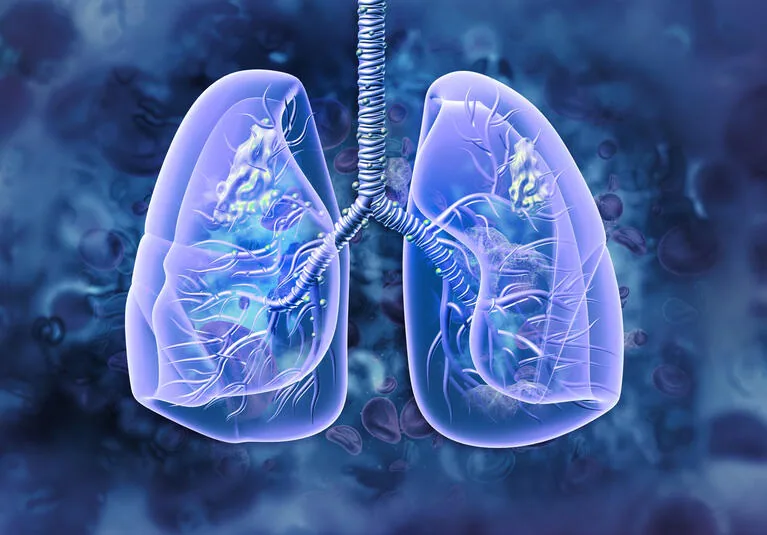
Chest medicine, also known as pulmonary medicine, is a medical specialty focused on the diagnosis, treatment, and prevention of diseases affecting the lungs and respiratory system. It includes a wide range of conditions such as asthma, chronic obstructive pulmonary disease (COPD), pneumonia, tuberculosis, lung cancer, and sleep disorders like sleep apnea.
Pulmonologists, the specialists in this field, use diagnostic tools like chest X-rays, CT scans, and pulmonary function tests to assess lung function and develop treatment plans. The goal of chest medicine is to improve respiratory health, manage chronic conditions, and enhance patients’ quality of life through both medical and, when necessary, surgical interventions.



Chest medicine, or pulmonary medicine, has several specialized branches, each focusing on specific aspects of respiratory health. These branches include:
These branches work together to provide comprehensive care for patients with a wide variety of respiratory conditions, ensuring tailored treatment plans to improve lung health and overall well-being.
Bronchitis is an inflammation of the airways (bronchi) in the lungs, which can cause coughing, wheezing, shortness of breath, and mucus production. It can be classified into two main types: upper bronchitis and lower bronchitis.
Upper Bronchitis:
Upper bronchitis, also known as acute bronchitis, affects the bronchi in the upper part of the lungs, particularly the trachea (windpipe) and the larger bronchi. It is often caused by viral infections like the flu or the common cold, although bacterial infections and irritants like smoke or pollution can also be contributing factors.
Symptoms of upper bronchitis may include:
Treatment:
Lower Bronchitis:
Lower bronchitis refers to bronchitis affecting the smaller bronchi and the bronchioles deeper in the lungs. It is often seen in chronic conditions such as chronic obstructive pulmonary disease (COPD) or chronic bronchitis, which is a long-term condition often linked to smoking. This type of bronchitis may lead to more serious complications like pneumonia.
Symptoms of lower bronchitis may include:
Treatment:
Prevention of Bronchitis (Upper and Lower):
Conclusion:
Bronchitis, whether upper or lower, is a common respiratory condition that can range from mild to severe. While upper bronchitis is often temporary and caused by viral infections, lower bronchitis, especially in chronic cases, can lead to long-term complications. Treatment generally involves managing symptoms, avoiding irritants, and using medications to ease inflammation and improve breathing. Preventive measures, including vaccination, good hygiene, and avoiding smoking, are important for reducing the risk of developing bronchitis.
Chest Allergy is a condition where the immune system overreacts to certain substances, known as allergens, that are inhaled or encountered by the body. This leads to inflammation and irritation in the lungs and airways, resulting in symptoms such as wheezing, coughing, chest tightness, and shortness of breath. Chest allergies are often associated with conditions like asthma, rhinitis, or bronchitis. The allergens can include dust mites, pollen, pet dander, mold, smoke, and pollution.
Symptoms of Chest Allergy:
Methods of Treatment:
Methods of Prevention:
Conclusion:
Chest allergies can cause significant discomfort and impact quality of life, but with proper treatment and preventive measures, symptoms can be managed effectively. Medications, lifestyle adjustments, and avoiding allergens are key to controlling and reducing the impact of chest allergies on daily life. If symptoms persist or worsen, consulting a healthcare provider for a tailored treatment plan is essential.
What is Corona (COVID-19)?
Corona, or COVID-19, is an infectious disease caused by the SARS-CoV-2 virus. It was first identified in December 2019 in Wuhan, China, and quickly spread worldwide, causing a global pandemic. The virus mainly spreads through respiratory droplets when an infected person coughs, sneezes, talks, or breathes. It can also spread by touching surfaces contaminated with the virus and then touching the face, especially the mouth, nose, or eyes.
Symptoms of COVID-19:
Treatment for COVID-19:
Treatment for COVID-19 varies based on the severity of the infection. Most mild cases can recover at home with rest, hydration, and over-the-counter medications to relieve symptoms. However, severe cases may require hospitalization, oxygen therapy, or mechanical ventilation.
Prevention of COVID-19: To prevent the spread of COVID-19, the following measures should be followed:
By following these preventive measures and staying informed about the virus, we can reduce the transmission and impact of COVID-19.
WhatsApp us